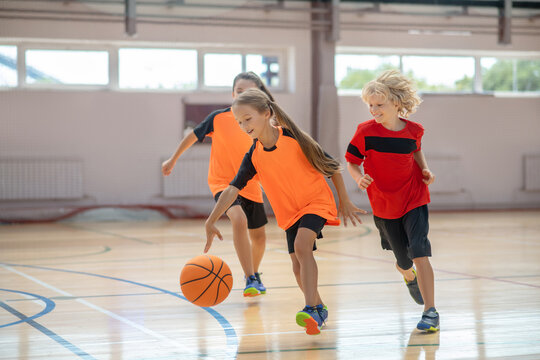
Improving your basketball game isn’t just about talent and hard work—it’s also about training smart. The right equipment can accelerate your progress by targeting specific skills and physical attributes. But with so many options available, picking the best basketball training equipment can feel overwhelming. Whether you’re a beginner or a seasoned player, understanding how to select gear that matches your needs is crucial. Here’s a detailed guide on how to choose basketball training equipment that will truly improve your game.
1. Define Your Training Goals
The first step in selecting basketball training equipment is clearly defining what you want to achieve. Are you focusing on shooting accuracy, dribbling control, speed, or strength? Your goals will determine the kind of equipment you need.
For example, if improving your shooting is the priority, consider investing in shooting aids such as shooting machines, adjustable hoops, or targets. If ball handling is your weak spot, tools like dribbling gloves, cones for agility drills, or dribbling goggles that train you to keep your eyes up might be more useful. For speed and endurance, equipment such as agility ladders, jump ropes, and resistance bands will help build explosive power and cardiovascular fitness.
2. Consider Your Skill Level
Your current level of skill greatly influences the type of equipment you should use. Beginners typically need simple, straightforward tools that help build fundamental skills without complexity. For example, basic basketballs, cones, and an agility ladder are excellent for establishing a solid foundation.
Intermediate and advanced players, on the other hand, benefit from specialized equipment that challenges them further and refines their techniques. Weighted basketballs, vertical jump trainers, or smart training devices with performance tracking features might be more appropriate at this stage. Using equipment suited to your skill level prevents frustration and ensures steady progress.
3. Evaluate Quality and Durability
Basketball training equipment often takes a lot of wear and tear, so durability is a key factor. Investing in high-quality gear ensures your equipment lasts longer and performs better. Look for reputable brands that use sturdy materials—such as durable plastic cones that can withstand outdoor use or basketballs made from high-grade composite leather.
Durable equipment not only saves money in the long run but also reduces safety risks during training. For example, resistance bands with reinforced stitching are less likely to snap unexpectedly, preventing injuries.
4. Budget and Cost Efficiency
Budget is a practical consideration that can’t be ignored. High-end training gear often comes with a higher price tag, but that doesn’t mean you have to spend a fortune to improve your game.
Beginners should start with affordable, essential equipment that covers the basics. For example, a quality basketball, cones, and an agility ladder can provide excellent value without breaking the bank. As you advance, consider investing in specialized tools that justify their cost with features and durability.
Always weigh the benefits of the equipment against its price. It’s better to own a few high-quality, frequently used items than to have many pieces of gear that end up unused.
5. Space and Portability
Where and how you plan to train should influence your equipment choices. If you train at home with limited space, opt for compact and portable gear like foldable agility ladders, resistance bands, or a portable hoop.
For those who practice outdoors or in larger gym spaces, sturdier and bigger equipment may be suitable. Portable gear is also ideal if you travel or attend different training venues, as it’s easier to transport and set up.
6. Versatility and Multi-Functionality
Multi-use equipment offers excellent value by allowing you to work on different skills with the same tool. Resistance bands, for example, can be used for strength training, flexibility exercises, and injury prevention. Agility ladders help improve footwork, speed, and coordination.
Choosing versatile gear maximizes your training options without overcrowding your space or inflating costs.
Conclusion
Choosing the best basketball training equipment starts with understanding your personal goals and skill level. Prioritize quality and durability to ensure safety and longevity. Balance your budget wisely, and consider the training environment to select equipment that fits your space and lifestyle. Lastly, opt for versatile tools that allow comprehensive development.
By following these guidelines, you can make informed decisions that enhance your training efficiency and help you improve faster on the court. Remember, the right equipment is an investment in your basketball journey—choose wisely and train smart!